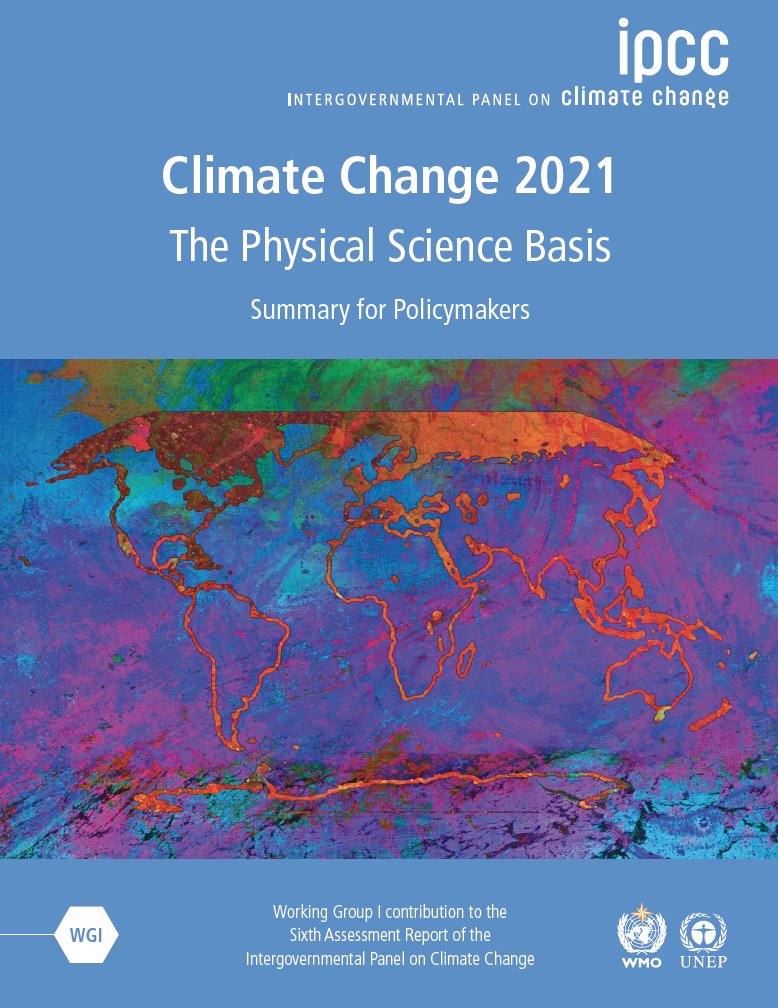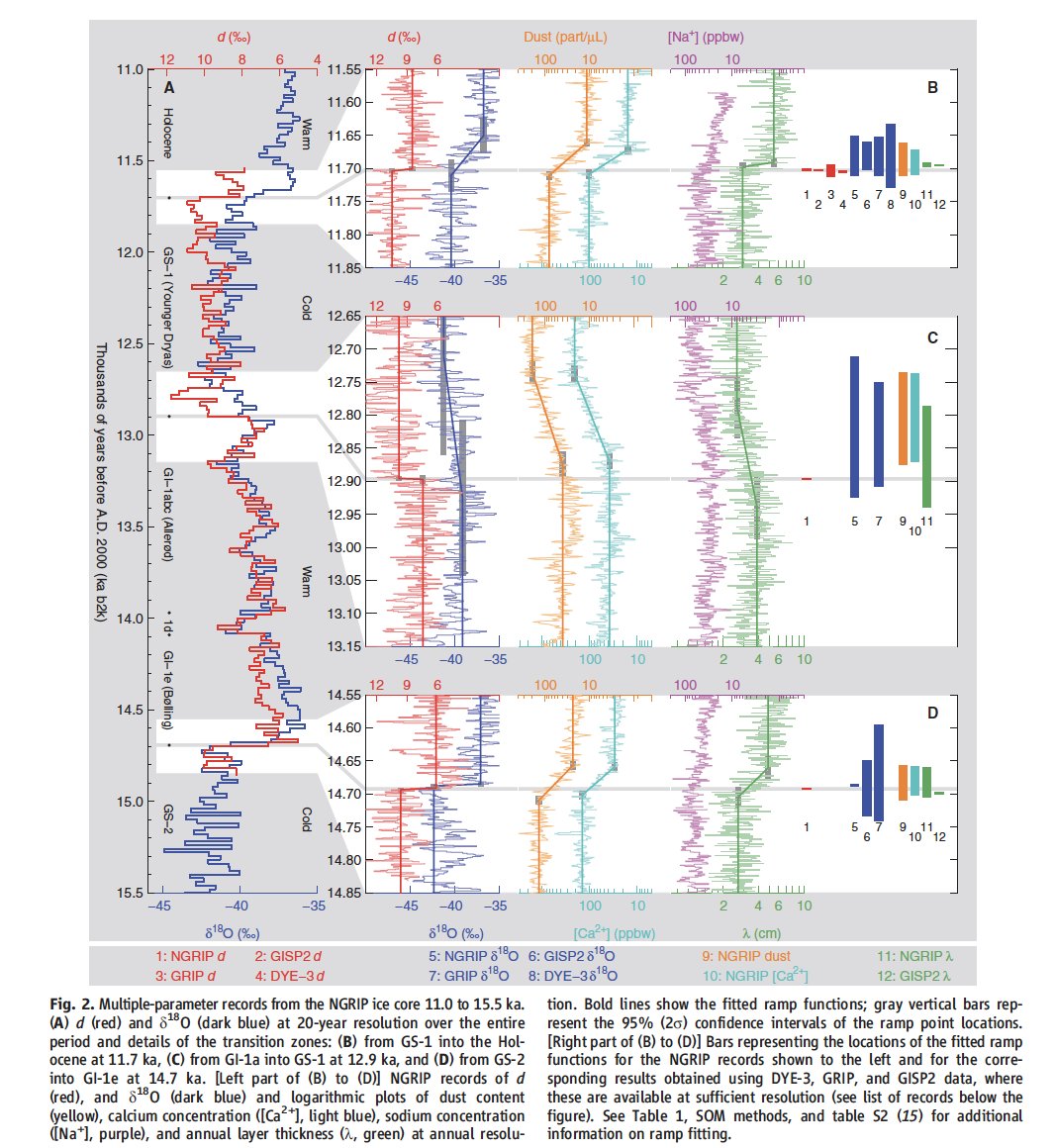
On the opening of the 2021 @UICN world conservation congress, it is an opportunity to flag the close inter-connections between biodiversity and climate change.
🧵➡️
(1/...)
🧵➡️
(1/...)

This has been the focus of an @IPBES @IPCC_CH co-sponsored workshop, with a scientific outcome and workshop report available here : ipbes.net/events/launch-…
Here are the main points of the workshop report :
(2/...)
Here are the main points of the workshop report :
(2/...)
Limiting global warming to ensure a habitable climate and protecting biodiversity are mutually supporting goals, and their achievement is essential for sustainably and equitably providing benefits to people.
(3/...)
(3/...)

Increasing energy consumption, overexploitation of natural resources and unprecedented transformation of land-, freshwater- and seascapes over the past 150 years have paralleled technological advances and supported better living standards for many...
(4/...)
(4/...)
but have also led to changes in climate and the accelerating decline of biological diversity worldwide, both negatively impacting many aspects of good quality of life.
(5/...)
(5/...)

The mutual reinforcing of climate change and biodiversity loss means that satisfactorily resolving either issue requires consideration of the other.
(6/...)
(6/...)

Previous policies have largely tackled the problems of climate change and biodiversity loss independently.
(7/...)
(7/...)
Policies that simultaneously address synergies between mitigating biodiversity loss and climate change, while also considering their societal impacts, offer the opportunity to maximize co-benefits and help meet development aspirations for all.
(8/...)
(8/...)

As climate change progresses, the distribution, functioning and interactions of organisms, and thus ecosystems, are increasingly altered.
(9/...)
(9/...)
The adaptive capacity of most ecosystems and social-ecological systems will be exceeded by unabated anthropogenic climate change, and significant adaptive capacity will be required to cope with residual climate change even under ambitious emissions reduction.
(10/...)
(10/...)
In a world increasingly affected by climate change, maintaining biodiversity relies on enhanced and well-targeted conservation efforts, coordinated with and supported by strong adaptation and innovation efforts.
(11/...)
(11/...)

Biodiversity conservation approaches such as Protected Areas have been essential for successes to date, but, on aggregate, have been insufficient to stem the loss of biodiversity at a global scale.
(12/...)
(12/...)
A new conservation paradigm would address the simultaneous objectives of a habitable climate, self-sustaining biodiversity, and a good quality of life for all.
(13/...)
(13/...)
The area of intact and effectively protected land and ocean required to meet the three objectives of a habitable climate, self-sustaining biodiversity, and a good quality of life is as yet not well established.
(14/...)
(14/...)
Several land- and ocean-based actions to protect, sustainably manage and restore ecosystems have co-benefits for climate mitigation, climate adaptation and biodiversity objectives.
(15/...)
(15/...)
Actions to protect, sustainably manage and restore natural and modified ecosystems that address societal challenges such as climate mitigation and adaptation are often referred to as nature-based solutions.
(16/...)
(16/...)
Nature-based solutions (NbS) can play an important role in climate mitigation, but the extent is debated, and they can only be effective with ambitious reductions in all human-caused greenhouse gas emissions.
(17/...)
(17/...)
Nature-based solutions can be most effective when planned for longevity and not narrowly focussed on rapid carbon sequestration.
(18/...)
(18/...)
Implementing nature-based solutions also creates co-benefits for adaptation to climate change, for nature and its contributions to people.
(19/...)

(19/...)


Avoiding and reversing the loss and degradation of carbon- and species-rich ecosystems on land and in the ocean is of highest importance for combined biodiversity protection and climate change mitigation actions with large adaptation co-benefits.
(20/...)
(20/...)
Restoring carbon- and species-rich ecosystems on land and in the ocean is also highly effective for both climate change mitigation and biodiversity, with large adaptation co-benefits.
(21/...)
(21/...)
Sustainable agricultural and forestry practices can improve adaptive capacity, enhance biodiversity, increase carbon storage in farmland and forest soils and vegetation, and reduce greenhouse gas emissions.
(22/...)



(22/...)




The creation of green infrastructure in cities is increasingly being used for climate change adaptation and restoration of biodiversity with climate mitigation co-benefits
(23/...)
(23/...)
In both land and marine systems, options exist to combine nature-based and technology-based measures for climate change mitigation and adaptation, while contributing to biodiversity 

Measures narrowly focused on climate mitigation and adaptation can have direct and indirect negative impacts on nature and nature’s contributions to people
(25/...)


(25/...)



Actions undertaken for climate change mitigation by enhancing ecosystem carbon sinks through biomass, planting large areas of forests or crops for biomass energy, may have other important consequences for the climate system
(26/...)
(26/...)
Planting bioenergy crops (including trees, perennial grasses or annual crops) in monocultures over a very large share of total land area is detrimental to ecosystems, reduces supply of many other nature’s contributions to people...
(27/...)
(27/...)
Afforestation, which involves planting trees in ecosystems that have not historically been forests, and reforestation with monocultures, especially with exotic tree species, can contribute to climate change mitigation but ...
(29...)
(29...)
are often detrimental to biodiversity and do not have clear benefits for adaptation.
(30/...)
(30/...)
Technology-based measures that are effective for climate change mitigation can pose serious threats to biodiversity. They should be evaluated in terms of their overall benefits and risks.
(31/...)
(31/...)
Technical and technological measures that are narrowly focused on climate adaptation can have large negative impacts on nature and nature’s contributions to people but can also be complementary to nature-based solutions.
(32/...)

(32/...)


Measures intended to facilitate adaptation to one aspect of climate change without considering other aspects of sustainability may in practice be maladaptive and result in unforeseen detrimental outcomes
(33/...)
(33/...)
Where nature-based solutions are used as carbon offsets, they are most effective when applied subject to strict conditions and exclusions, and not used to delay mitigation actions in other sectors.
(34/...)
(34/...)
Measures narrowly focusing on protection and restoration of biodiversity have generally important knock-on benefits for climate change mitigation, but those benefits may be sub-optimal compared to measures that account for both biodiversity and climate.
(35/...)


(35/...)



Protected areas are an important instrument to address biodiversity loss, with climate mitigation and adaptation co-benefits
(36/...)
(36/...)
Active management in conservation, such as through altering wildfire frequency or reintroducing key species can be beneficial for both biodiversity and climate mitigation and adaptation but can be antagonistic in some contexts
(37/...)
(37/...)
Achieving synergistic benefits and trade-offs between biodiversity conservation, ecosystem service enhancement and climate change mitigation is strongly dependent on which biomes, ecosystem uses, and sectoral interactions are under consideration.
(38/...)
(38/...)

Locally motivated biodiversity conservation actions can be incentivized, guided & prioritized by global objectives and targets, such as climate benefits. Every local initiative matters, since the benefits of many small, local biodiversity measures accumulate at the global level.
Changes in per capita consumption, shift in diets, and progress towards sustainable exploitation of natural resources, including reduced post-harvest waste, could make substantial contributions to addressing the biodiversity crisis, climate change mitigation and adaptation.
(40)
(40)
For biodiversity, the concept of offsets, the substitutability among a slate of possible actions, can introduce the flexibility required to achieve multiple competing objectives at regional scale, if applied subject to strict conditions and exclusions.
(41/...)
(41/...)
Treating climate, biodiversity and human society as coupled systems is key to successful outcomes from policy interventions
(42/...)
(42/...)
The explicit consideration of the interactions between biodiversity, climate and society in policy decisions provides opportunities to maximize cobenefits and to minimize trade-offs and co-detrimental (mutually harmful) effects for people and nature.
(43/...)
(43/...)

Under the effects of biodiversity loss and climate change, crucial (hard to reverse or irreversible) thresholds (tipping points) can be exceeded with dire consequences for people and nature, but ...
(44/...)
(44/...)
... but positive social tipping interventions can help attain desirable biodiversity-climate interactions.
(45/...)
(45/...)

When considering biodiversity-climate-society interactions, it is important to examine how the linkages between policy decisions and consequences unfold over time and how they act beyond the specific spatial context.
(46/...)
(46/...)
Assessing the range of viable solutions (‘solution space’) to achieve the intended climate mitigation, adaptation and biodiversity conservation outcomes, while positively contributing to people’s quality of life, requires recognition of differences in social-ecological contexts.
In the presence of strong and apparently unavoidable trade-offs within the biodiversity-climate-society nexus, promoting social tipping interventions to modify the ways society and nature interact can be a viable joint solution.
(48/...)
(48/...)
Transformative change in governance of socio-ecological systems can help create climate and biodiversity resilient development pathways.
(49/...)
(49/...)

While integrated solutions for the biodiversity-climate nexus exist that also have co-benefits in terms of sustainable development and meeting basic needs of the poor and vulnerable, governing and financing these nexus approaches is challenging.
(50/...)
(50/...)
A key outcome for successfully integrated governance of climate, biodiversity and good quality of life will be to help identify solutions for stewardship that deliver the highest co-benefits while avoiding trade-offs.
(51/...)
(51/...)
Goal-based governance is now the norm for climate, biodiversity and sustainable development, but can create challenges in implementation.
(52/...)
(52/...)
Multi-actor and multi-scale governance are appropriate approaches to the management of multifunctional ‘scapes’ at different scales.
(53/...)
(53/...)
Transformative change can occur using leverage points in socio-ecological systems which alter future trajectories.
(54/...)
(54/...)

Critical leverage points include exploring alternative visions of good quality of life, rethinking consumption and waste, shifting values related to the human-nature relationship, reducing inequalities, and promoting education and learning.
(55/...)
(55/...)
Better tools for multi-sectoral scenario planning and modelling can help map pathways to simultaneously achieve the goals in the SDGs, the Paris Agreement and the post-2020 Global Biodiversity Framework in the medium and long term.
(56/...)
(56/...)
Achieving the scale and scope of transformative change needed to meet the goals of the @UNFCCC and @UNBiodiversity and the Sustainable Development Goals relies on rapid and far-reaching actions of a type never before attempted.
-End-
-End-
• • •
Missing some Tweet in this thread? You can try to
force a refresh


















